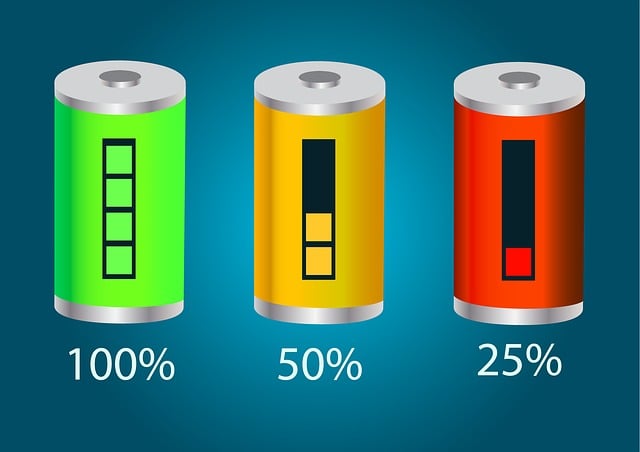What Fees Do Binance Charge in 2025?
Author: Jameson Richman Expert
Published On: 2025-09-08
Prepared by Jameson Richman and our team of experts with over a decade of experience in cryptocurrency and digital asset analysis. Learn more about us.
Engaging effectively in cryptocurrency trading requires a nuanced understanding of platform fee structures, as these costs directly impact overall profitability. Binance, recognized as one of the industry’s largest and most comprehensive exchanges, maintains a reputation for competitive, transparent, and evolving fee policies. As we approach 2025, the complex landscape of blockchain technology advancements, increasing regulatory scrutiny, and shifting market dynamics necessitate a deep dive into Binance’s fee architecture. For traders—whether retail, institutional, or high-frequency—knowing how fees are structured, how they can be minimized, and how they might evolve offers a strategic advantage. This detailed analysis combines current data, past trends, and future projections to equip you with actionable insights for cost-effective trading within Binance’s ecosystem.

In-Depth Analysis of Binance’s Fee Structure in 2025
Binance’s fee model is crafted to promote liquidity, incentivize platform loyalty, and adapt to the rapid pace of technological innovation. Its layered approach encompasses several categories: trading fees, withdrawal costs, and ancillary service charges. A key feature is the platform’s ability to reward high-volume traders and those holding Binance Coin (BNB), fostering a mutually beneficial environment. As regulatory frameworks tighten and blockchain scalability progresses, Binance’s fee policies have evolved to remain competitive and transparent, making continuous awareness and strategic planning essential for traders aiming to optimize costs in 2025.
Spot Trading Fees in 2025
Spot trading remains the core activity on Binance. In 2025, the standard fee for executing spot trades is a highly competitive 0.1% for both maker and taker orders. This position places Binance among the lowest-tier global exchanges, supported by its vast liquidity and user base. However, the platform’s fee incentivization extends further when payments are made using Binance Coin (BNB). Utilizing BNB to pay trading fees reduces the rate to approximately 0.075%, providing immediate savings. For high-volume traders or institutional clients, Binance employs a tiered discount structure, where monthly trading volumes exceeding USD 1 billion or substantial BNB holdings can drop fees to as low as 0.02%. These discounts are particularly advantageous for algorithmic traders, arbitrageurs, and professional investors, creating compelling incentives to increase activity and BNB participation, thus strengthening Binance's ecosystem.
Tiered Fee System and Its Strategic Implications
Binance’s tiered fee system is a core component that influences trader behavior and platform economics. As of 2025, the tiers are structured around both 30-day trading volume and BNB holdings:
- Level 1:
30-day volume under USD 50,000 — trading fees at 0.1%. - Level 2:
30-day volume between USD 50,000 and USD 5 million — fees reduce to approximately 0.09%. - Level 3:
30-day volume surpassing USD 5 million or significant BNB holdings — fees as low as 0.02%.
These thresholds motivate traders to scale their activity or increase BNB holdings, fostering a growth cycle where higher engagement drives lower costs and enhances liquidity. Moreover, strategic BNB staking or long-term holding can elevate users into higher discount brackets, emphasizing the importance of ecosystem participation. This flexible structure aligns Binance’s interests with those of its users, promoting sustained platform activity and loyalty.
Withdrawal Fees and Blockchain Network Costs in 2025
Unlike trading fees, withdrawal costs are largely determined by underlying blockchain network conditions. In 2025, typical fees are as follows:
- Bitcoin (BTC): approximately 0.0005 BTC, with fluctuations during network congestion peaks.
- Ethereum (ETH): roughly 0.005 ETH, subject to spikes during high network demand.
- Ripple (XRP): around 0.25 XRP, a low and predictable fee structure ideal for frequent transfers.
Blockchain fees are inherently volatile, especially during periods of high congestion, which can erode profit margins if not managed carefully. To mitigate these costs, traders often adopt practices such as consolidating withdrawals, scheduling transactions during off-peak hours, and utilizing Layer-2 solutions like Binance Smart Chain (BSC) or other sidechains that offer lower transaction fees. Binance occasionally provides promotional incentives, such as fee rebates or zero-fee trading days, especially during network congestion episodes, further reducing costs. Staying informed about blockchain fee trends through analytics tools and automating withdrawal timings can significantly improve cost efficiency over time.
Other Service-Related Fees in 2025
Beyond spot trading and withdrawals, Binance offers a suite of financial products, each with its unique fee implications:
- Futures Trading: Futures transaction fees typically range between 0.02% and 0.04% for both maker and taker orders. These fees are generally lower than spot trading, but leverage introduces additional considerations such as margin interest and liquidation risks. Tiered discounts and promotional campaigns further reduce costs for high-volume futures traders.
- Margin Trading: Borrowing fees, including interest rates and liquidation penalties, depend on loan size, collateral type, and duration. Margin interest rates fluctuate based on market conditions, but strategic timing—borrowing during low-interest periods and repaying quickly—can optimize costs.
- Staking, Savings, and Lending: These passive income options typically carry minimal or no direct fees, with platform-specific penalties or lock-up periods sometimes applying. They serve as cost-effective ways to grow holdings without active trading, often with zero or minimal fees, making them attractive for long-term investors.
Given this diversity, staying updated with Binance’s latest fee policies across different services is crucial, as the company regularly introduces new features and adjusts existing fee structures to remain competitive and compliant with evolving regulations.
Strategies for Minimizing Binance Fees in 2025
Drawing from extensive experience and market insights, here are proven strategies to keep trading costs low on Binance in 2025:
- Utilize BNB for Fee Payments: Always opt to pay trading fees with Binance Coin (BNB). This simple step offers immediate discounts and, over time, compound savings as your trading volume and BNB holdings grow.
- Increase Trading Volume and BNB Holdings: Strive to meet or surpass volume thresholds or BNB balance requirements for higher tiers. Employ batch trading, strategic order placement, or algorithmic tools to reach and maintain these levels efficiently.
- Capitalize on Promotional Campaigns: Binance runs periodic fee rebates, zero-fee days, and special discounts during events such as platform anniversaries or new product launches. Regularly monitor official channels for these opportunities to maximize savings.
- Optimize Order Types and Trading Techniques: Use limit orders whenever possible, as they often qualify as makers with lower fees. Combining this with fee discounts amplifies cost savings, especially for high-frequency traders.
- Plan and Consolidate Withdrawals: Reduce blockchain transaction costs by consolidating smaller withdrawals into fewer, larger transactions during off-peak times. Automating or scheduling withdrawals can further optimize expenses.
- Leverage Advanced Trading Tools: Implement tools like STOP-LIMIT orders, OCO (One-Cancels-the-Other), and algorithmic trading to reduce slippage and avoid unnecessary transaction costs.
Maintaining vigilance on Binance’s official updates regarding fee changes, blockchain fee trends, and new features allows traders to adapt swiftly. Diversifying trading strategies and leveraging Binance’s ecosystem tools can significantly enhance overall cost efficiency, providing a sustainable competitive edge in the rapidly evolving crypto environment of 2025.
Predictions for 2025 and the Future of Binance Fees
Looking ahead, Binance is poised to refine its fee ecosystem further, driven by technological innovation, regulatory evolution, and market demand. Anticipated developments include:
- Personalized Fee Structures: The deployment of AI and data analytics may enable Binance to offer tailored fee discounts based on individual trading behavior, engagement levels, and loyalty metrics, creating a more bespoke fee environment.
- Blockchain Scalability and Cost Reductions: Advances such as Layer-2 solutions, sharding, and sidechains are expected to dramatically lower transaction fees, making trading and withdrawals faster, cheaper, and more efficient.
- Sustainable Incentives: Binance may introduce eco-friendly initiatives, rewarding users who participate in sustainable blockchain projects or opt for environmentally conscious transaction options with reduced fees or other benefits.
- Enhanced Regulatory Transparency: As global regulatory frameworks tighten, Binance might adopt clearer, standardized fee disclosures, possibly leading to adjustments aligned with compliance requirements.
- Institutional Customization: Larger, institutional clients may negotiate bespoke fee arrangements, reflecting their volume and engagement, further differentiating Binance’s fee offerings for various segments.

Conclusion
Mastering Binance’s fee structure in 2025 is crucial for optimizing your trading profitability and operational efficiency. The platform’s layered fee system, incentivized BNB discounts, and diversified service offerings present numerous opportunities for cost reduction—particularly if approached with strategic planning. Staying informed of platform updates, blockchain fee trends, and technological innovations will enable you to adapt quickly, leveraging new tools and opportunities for savings. Proactive management—such as increasing trading volume, utilizing BNB, timing transactions during low congestion periods, and employing advanced order types—can significantly enhance your trading returns. As Binance continues to evolve, embracing these strategies will ensure you maximize benefits, maintain competitiveness, and foster long-term success in the dynamic crypto landscape of 2025 and beyond.